Aircraft carrier for Russia: faster than you expect
According to some indirect signs, the top political leadership of the state has moved from dreams of a hypothetical aircraft carrier to specifics. There is no talk of designing a new ship yet, but now the possibility of building it is being discussed already from practical utilitarian positions, and not “in general”. In this regard, a comment.
The need for aircraft carrier ships in local wars was perfectly demonstrated by the Americans in Vietnam. With all the superiority of the US Air Force in the number of delivered to the target aviation naval aviation had a colossal advantage in the flexibility of use and, if necessary, in the response time of aviation to requests from ground forces.
There were two points in the Gulf of Tonkin: Yankee Station, on which aircraft carriers operating against North Vietnam were deployed, and Dixy Station, with which aircraft operated over South Vietnam. Often, it was the Navy's planes that covered the newly discovered target faster than anyone: they were closer to flying than the Air Force's planes from ground-based air bases.
Prior to this, during the war in Korea, carrier-based aircraft actually saved South Korea from occupying the DPRK. At a certain point, the troops of South Korea remained virtually without airfields, and the only "place" from which the troops at the Busan bridgehead could be supported by aircraft were American aircraft carriers.
In the USSR and Russia, with our defensive installations, the role of an aircraft carrier has always been seen different - firstly, as an instrument of defensive warfare and the defense of its territory, and secondly, as an air defense carrier, first of all whose air group must fight enemy aircraft. These views were summarized in the article. “Coast Defense Carrier”. True, in the end, our only aircraft carrier had to fight as a strike, striking along the coast. Unsuccessfully.
Some comments regarding this ship are also given in the article. “The carrier issue. The fire at Kuznetsovo and the possible future of aircraft carriers in the Russian Federation. ”
This, however, is not about Kuznetsov. It's about the opportunities that Russia has in building a new aircraft carrier ship. They were also briefly mentioned in the second article mentioned. Due to the fact that the question is beginning to be translated into a practical plane, we will study it in more detail.
Big and atomic?
There is a rule: the larger the carrier, the better. Firstly, the larger the dimensions, the lower the influence of pitching and less restrictions on flights. Secondly, the larger the deck, the less accidents and other incidents on it. Both of these claims have been repeatedly verified by US Navy statistics.
This applies to Russia more than to anyone else. We have the most difficult climatic conditions in those theater of operations, where aircraft carriers will have to operate in a defensive war, with the strongest excitement - the Barents and Norwegian Seas. We still have in service the Su-33, very large by all standards aircraft, which requires space on the deck.
And purely for tactical reasons, a powerful air group with heavy aircraft for various purposes, including auxiliary ones, can be deployed on a large ship. The light ship has problems with this. A strong air group is much more useful in the struggle for supremacy in the air and at sea than a weak one, this is obvious.
In addition, Russia is a world leader in the production of nuclear power plants for surface ships and ships. Right now, tests are underway for the newly built Arctic icebreaker with an atomic power plant, and this power plant is built as a fully electric one - the nuclear reactor feeds steam turbine generators that run electric motors. This is a serious backlog for warships of the future, although for an aircraft carrier, the icebreaker’s power plant is, of course, small and weak. But who said that you cannot create a more powerful one? Nuclear power plants give Russia the theoretical opportunity to create a ship with a displacement of 70-80 thousand tons, which in terms of efficiency will be comparable to American aircraft carriers and will surpass all the rest. There is only one problem with such a ship - Russia cannot build it, without regard to existing technologies and available components.
Those who monitor the military shipbuilding in our country know that almost no projects were built without any serious problems and serious difficulties. Even a seemingly completely domestic “Karakurt” came across a shortage of diesel engines, and now also a “muddy” lawsuit from the Ministry of Defense to the Pella plant, which in fact showed the ability to build warships in Russia quickly. Even small BMZ ships in our country are born in agony, either due to the incomprehensible technical policy of the Navy, or due to the fact that it begins to be influenced by the corruption interests of certain influential defense industry workers, up to the appearance of new ship projects, a chronic inability is imposed on it In the recent past, the Ministry of Defense has established more or less sane financing of shipbuilding programs, collapse among subcontractors, collapse of cooperation between suppliers from other CIS countries and Russian enterprises, sanctions for deliveries ku of components, and much more.
Everyone is to blame there, but the result is important to us: even simple projects in these Augean stables are born with pain and suffering. It’s out of the question to jump immediately to such a difficult task as an aircraft carrier, but even promptly restoring order in this area will not help to remove all organizational issues instantly.
Russian shipbuilding is undergoing a stage of degradation of control and truly large projects (and the 70-80 thousand-ton nuclear aircraft carrier is a very large project), it "will not master".
The second problem is that such a ship is nowhere to build. It’s just nowhere, and that’s it. What is needed to build such a ship? Firstly, a slipway or dry dock of appropriate sizes, with a supporting surface strong enough to support the mass of the ship. In the case of the dock, after it is filled with water, the draft of the ship should be less than the depth of the water in the dock. Further, it is necessary that in the water area or basin where the ship will be taken out of the dock or rolled off the slipway, there should also be sufficient depth. If this is not the case, then you need an appropriate floating dock. Then, sufficient depth should be at the construction wall, where the ship will be completed, and in addition, it should have a suitable length. For reference, it is worth mentioning that the American AVMA Enterprise, the first nuclear aircraft carrier in the world, similar to the hypothetical ship described, had a displacement of approximately 74000 tons, had a length of 342 meters, a waterline width of 40, a maximum of nearly 79, and a draft of 12 meters.
It is also desirable to have cranes with a loading capacity of 700-1000 tons to assemble the ship in large blocks, and the route for the ship to leave the plant at sea should not have obstacles limiting the height and draft of the ship, and should in principle be possible for a ship of this size.
The final touch - all this should be where there are allied enterprises, developed communications, labor that does not need to be imported from anywhere, where domestic steel can not be delivered very expensive. That is, frankly, all this must happen in the European part of Russia, otherwise the already expensive ship will become insanely expensive.
Today, there are no such shipyards in the European part of Russia. Moreover, there are no such shipyards that could be brought to compliance with the above requirements within a reasonable time and for a reasonable price. Most likely, we will talk about the construction of a new shipbuilding complex, moreover, a complex unnecessary for anything else - Russia will build any other ships without it.
The third question is purely military. For domestic fleet even the much simpler ship - “Kuznetsov”, is an organizational challenge of such strength that it is not clear who will defeat anyone - whether, after all, “Kuznetsov” and its air group will turn into a deadly combat vehicle, or the ship will slowly finish off, and without making it a full-fledged combat unit. In its current state, the Navy simply cannot master the Russian Enterprise and cannot control it.
And not without reason, many informed officers are confident that the construction of such a ship will take at least twenty years and will require unpredictable costs. But there may be design errors, the topic is something new for our country (again).
All these factors require the project as simple as possible, as little as possible, and preferably, at least a little familiar with domestic industry. And also - a feasible one for the development of the Navy, which, however, needs to be prepared for such a ship, putting things in order at all levels, and restoring centralized control, burning with red-hot iron those who found a synecure in the service and healing this type of aircraft as a whole. And, of course, the planes on it should fly if not the same ones that today can land on the Kuznetsov and take off from it, then at least their modifications.
All this sharply limits the choices, and in general, in fact, reduces them to one single one.
Russian "Vikrant"
In 1999, work began on the light aircraft carrier Wickrant in India. Russia took an active part in this program, and some documentation for this ship is available in the Nevsky Design Bureau. For the construction of the ship, of course, it is not nearly enough, but domestic experts have some idea of the design of this ship.
The Wikrant, according to Western data, has a displacement of 40 tons, that is, it is about as heavy and large as the American UDC of the Wosp and America types. At the same time, its air group is almost twice as large and consists of MiG-000K airplanes mastered by Russian industry and Kamov Design Bureau helicopters. At the same time, up to twenty fighter jets are declared as part of the air group, which is very good, and incomparably better than any UDC with vertical lines.
The Vikranta gas turbine is fully gas turbine, it is equipped with four General Electric LM2500 gas turbines with a capacity of 27500 hp. each one. The turbines work in pairs on adder-gearboxes, and the latter on the valolin line, of which the ship has two. The advantages of such a scheme are its simplicity and unification - adder-reducers are much simpler than some CODAG-type reducers, where you need to synchronize a high-speed turbine and diesel, and the ship has only one engine type.
The power of one gas turbine engine of this ship is 27500 hp. This is the same as the domestic M-90FRU. Of course, to use the turbine as a march, it will have to be reworked, but it is much easier to create engines from scratch and the M-90FRU will serve as a base here.
The construction of a domestic version on domestic turbines seems to be much simpler from the point of view of where such a ship needs to be built.
As a plant where such a ship can be built, it seems most suitable, oddly enough, Baltic factory.
The slipway “A” of the Baltic Shipyard has a length of 350 meters and allows building hulls with a width of at least 36 meters, and with some reservations, a few more. Its carrying capacity is guaranteed to withstand the aircraft carrier, the length is also more than sufficient. The question is wide.
And here the construction of the Wikrant building speaks its word. We look in what form it was launched. In order to reach this stage, the Baltic Shipyard does not need any reconstruction at all, it can be done right now at the available facilities. The water depth at the outfitting embankment and its length are also sufficient for this building.
The problem is how to finish building the ship further. "Wikrant" was completed at the dock, and without large and powerful cranes, as the Americans do or as they did in the USSR at the factory in Nikolaev. But we don’t have such a dock.
The Baltic plant on the outfitting embankment has only portal cranes with a lifting capacity of 50 tons and a floating crane of the German company Demag with a lifting capacity of 350 tons. And sponsons will have to be mounted on which the flight deck and the "island" lie. Speech about the large-block assembly cannot go here. However, there is no way to diverge with the blocks especially on the slipway, but “almost nothing” will be afloat with the blocks.
On the other hand, it may make sense for this project to update the cranes and install a crane more powerful at the plant on the embankment near the outfitting wall - this will probably be the only thing that needs to be reconstructed to build a light aircraft carrier.
Is it possible, in the end, to complete the "Russian" Vikrant "at the outfitting embankment? Yes, it will just be difficult, much more difficult than assembling the whole thing on a slipway or at least in the same dock as the Indians did. We'll have to build the ship in small blocks or sections, raise them with a floating crane, weld afloat, it is possible to re-moor the ship. Maybe - a lot of times.
This will complicate the construction, make it somewhat more expensive, increase the risks for workers during the docking of hull parts, and increase the construction time. Alas, the price of infrastructure failure is usually just that. However, the construction of a light aircraft carrier by this method is POSSIBLE. In contrast to trying to repeat Kuznetsov, or to build a normal large aircraft carrier with a nuclear power plant, a certain Russian Enterprise.
The next problem will be the passage of the ship under the western high-speed diameter.
The height limit for passage under the WHSD is 52 meters. In addition, a pipeline runs along the bottom of the Sea Canal, which limits draft to 9,8 meters. Thus, either the ship will have to be in these dimensions, or it will have to be completed after passing under the WHSD, as an option, to reinstall the mast with the radar with the same floating crane. The downside will be the inability to return to the factory without disassembly, if there is such a need ... well, this is a good reason to immediately make it right, so that no need arises!
One way or another, the construction of the ship in the Vicrant’s displacement, with a similar in power but domestic power plant, with the same air group and at a reasonable time at the Baltic Shipyard, is real.
There is, however, one problem that must be resolved before the first ruble is spent on the Russian “Vikrant”.
Contour problem
The Vikrant can be built at the Baltic Shipyard, there is some documentation for it, the engineers who participated in its development still work, the power plant can be quickly created on domestic turbines, it was created for serial Russian ship planes and using domestic components ... but it is too small for the Barents Sea.
By simply reproducing such a corps, Russia risks getting a ship that can be used in local wars somewhere in the south, but it will be useless to defend its territory. It will be wrong and you cannot do that.
The problem is pitching. In our latitudes, the sea waves are often too great. And the specificity of an aircraft carrier ship is that no rolling stock dampers are enough to minimize harm from it. Dimensions are needed, namely the length and width of the waterline and draft.
At the same time, it was experimentally established that these parameters at Kuznetsov are the minimum. And “Kuznetsov” has only one length along the waterline the same as “Vikrant” at the extremities. And the draft with a width, of course, is also greater.
Thus, we formulate the problem - it is necessary to build an aircraft carrier with a non-standard shape hull, in which the ratio to the dimensions along the waterline (main dimensions) to the sizes at the extremities would be completely different from that of the "Wikrant". In principle, this task cannot be considered unsolvable.
We're watching.
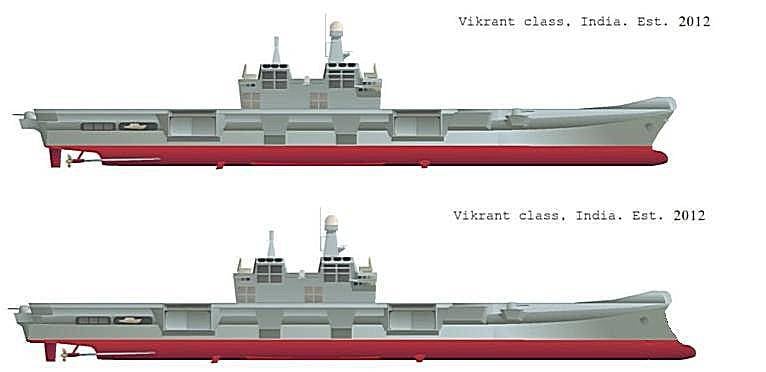
As you can see, even “eye estimation tells us that at least the length of the ship along the waterline is easy to increase. Of course, a drawing cannot be a guide to action, such things must first be estimated using calculations, then using models in a test pool, and nothing else. But the direction in which one needs to think is obvious, how obvious it is that at least partially the task becomes solvable. How long will the waterline increase? Compare.
As you can see, the reverse slope of the stem and the changed shape of the stern in theory make it possible to almost catch up with Liaoning, which, in turn, is slightly larger than Kuznetsov. Questions remain regarding width and draft. The slipway of the Baltic Shipyard allows you to build a hull that will be even wider than Kuznetsov’s waterline, but the GEM question intervenes - it should give speed, the ship can never be slow.
Draft is also a problem in some way - it cannot be lower than 9 meters, because otherwise the ship will not be held under the WHSD. This limitation is probably also surmountable, in the end, an icebreaker under the WHSD was carried out, although everything there was also “close to the bottom” of the draft. But here again, hydrodynamics can say its word ...
Thus, the necessary condition for the construction of such a "mobilization" aircraft carrier is the following.
It can and should be built if it is possible, due to non-standard design solutions, to provide contours with which the ship would have the same restrictions on the use of unrestrained aircraft as the Kuznetsov at smaller sizes and sufficient speed for a combat aircraft carrier. If studies show that this problem is solvable, then we can say that the “carrier rebus” in Russia has been solved. Imperfect, but with our economy, industry, organizational skills and technology, this will be almost a miracle.
If it turns out that the task is unsolvable, then for our society it will be a challenge of such proportions that in order to answer it we will have to radically change, creating another economy, industry, “covering” all our weaknesses in mentality, organizational abilities, and intellectual the level of both power and society.
Modern Russia will master the Wikrant, but the Russian Enterprise or Nimitz will be able to master only a completely different Russia. This option also cannot be considered unrealistic, we are one of the fastest growing societies on the planet, but it is better to leave the discussion of this option outside the scope of this article.
Thus, all of the above is true, correct and necessary if the problem of contours is solved. This is a matter of principle for the creation of a new domestic aircraft carrier. Without this, you should not even start.
Catapult
The fundamental difference between the "Russian" Vikrant "from the Indian should be the presence of a catapult launch. The dimensions and displacement of the ship make it possible to have a couple of catapults on it, and the amount of heat in the exhaust gases of four turbines of 27500 hp. each, it is quite possible to have a waste heat boiler of sufficient power for these catapults to work from it. Nonsense about freezing a pipe with steam at a temperature of 200 degrees Celsius is better left to children from kindergarten, but the main advantages of a catapult should be remembered.
Firstly, it is an opportunity to launch heavy aircraft, which immediately makes it possible to use DRLO aircraft, transport aircraft, tankers and anti-submarine vehicles on a ship, if all this is ever created. Without a catapult, the creation of such aircraft will be much more complicated and expensive, and their take-off weight will be seriously limited.
The second, and this is even more important in the case of Wikrant, is the reduction in the length of the deck required to launch the aircraft.
The "Vikrant" is shorter than the "Kuznetsov" and a very significant fraction of the length of the deck is reserved for it to start. For a ship of this size, this significantly complicates takeoff and landing operations and maneuvering on the deck, and, as a result, greatly reduces combat effectiveness. If there is even an opportunity at Kuznetsovo (technical, it’s not done at all) to provide takeoff from the front right starting position simultaneously landing another aircraft, then at Vikrant this is unrealistic.
Catapult in the nose is the solution to the problem. It reduces the deck length required for take-off to 100 meters and frees its central part.
Russia never built ships with a catapult, but the catapult for the Ulyanovsk TAVKR at the Proletarsky Zavod was made at one time. A lot of time has passed since then, but that old catapult is proof that, if necessary, we can at least have a factory where it was made, and it works.
Thus, the fundamental difference between the domestic "Wikrant" from the Indian should be the absence of a springboard and the presence of a pair of catapults. Without this, a ship, even with “finished” contours, would be flawed, with low combat efficiency.
Price issue
"Wikrant" stood up to India at $ 3,5 billion. With better shipbuilding capabilities than Russia, without sanctions, with near-zero climatic and low logistics costs, with cheap labor and the ability to buy components on the world market, rather than piece-making them with pilot lots, paying for the cost of OCD, figuratively speaking, for every nut. How much is the same ship adjusted for building a hull using mid-century technologies (at best) and everything else that Indians don’t have, but we have (and vice versa) will cost Russia?
More recently, the media disseminated with reference to some “source in the defense industry complex”, which remained unnamed, that the cost of building an aircraft carrier in Russia would be between 300 and 400 billion rubles.
I must say that this is very close to reality, and, alas, we are not talking about the domestic counterpart of Nimitz. It is worth starting from the fact that it is precisely 400 billion rubles that this will be the “upper” price of the ejection “Vikrant” of domestic production. If we consider that from the moment the final decision on the development of the ship is made to the last transaction from the Ministry of Defense, the contractor will take 10 years, without inflation, the ship will rise to the country at 40 billion rubles a year for a decade, and its entire cost will be "eaten up" »A significant share of fleet costs in the new GPV. Up to 10%.
How to lower prices? First, apply the method of "design at a given cost" wherever possible.
Secondly, saving on the design of subsystems, using simple engineering solutions.
We give an example. If our ship has two valolines and four gas turbines, then it means two gearboxes. Moreover, it is necessary to provide a different direction of rotation. Today, the Star Reducer manufactures various reducers for warships - right and left.
But the Americans on the "Springs" at one time simply set the gas turbine "mirror", differently positioning the turbines of the right and left sides in order to achieve rotation of the valines in opposite directions. At the same time, the ship did not have an inter-gear transmission, which also reduced the cost, and our ship should do the same. It is possible to arrange the rudders so that the shutdown of one of the valines could be compensated by the angle of the rudder.
Save on decoration, alloys (everywhere only steel) and the like. In addition, it is worth developing the same turbines with an eye not only on the aircraft carrier, but also on future URO ships and, more broadly, on a single turbine for the Navy, again, as was done by the Americans. In part, this will save some of the price of an aircraft carrier.
Alas, the main way to reduce the cost of the ship - a series - is unlikely to be available to us. In order for the production costs of the ship to begin to fall from serial production, you will have to order at least four ships of this type. The budget of Russia will not withstand such loads. Only a completely different country can afford such a thing. It will be very good for us if in the next 15-17 years we get a couple of such ships. Just great.
Conclusions
Today, there is a technical possibility of not very expensive (relatively large aircraft carrier with nuclear power plant) to build one or two light, about 40 tons of aircraft carriers, structurally similar to the Indian aircraft carriers "Vikrant", but equipped with a catapult launch. Prerequisites for success are:
- availability of necessary capacities, albeit in some way “problematic” - of the Baltic Plant;
- the presence of part of the documentation "Vikrant" and people familiar with this ship;
- the possibility of creating a power plant based on serial turbines;
- the ability to create an aircraft for an ejection launch based on the serial MiG-29K;
- the presence of a plant that once manufactured a catapult.
The disadvantages of the project are:
- the impossibility of large-block construction at the Baltic plant;
- the difficult process of completing the ship at the completion wall;
- the need for final completion after the launch of the ship under the WHSD and the inability to return the constructed ship back to the factory without partial disassembly;
- the corresponding appreciation of the ship.
At the same time, the ship’s cost can be partially reduced due to design decisions and the use of “uniform” design and development tests for this and other ships (turbines).
The fundamental condition is the possibility of giving the hull of the ship such contours with which it would have the same restrictions on the use of aviation as the Kuznetsov and sufficient speed for the warship. If this condition is not met (which is possible), then the construction of such a ship cannot begin.
And if it is done, then, it seems, we have a chance to get out of the carrier deadlock.
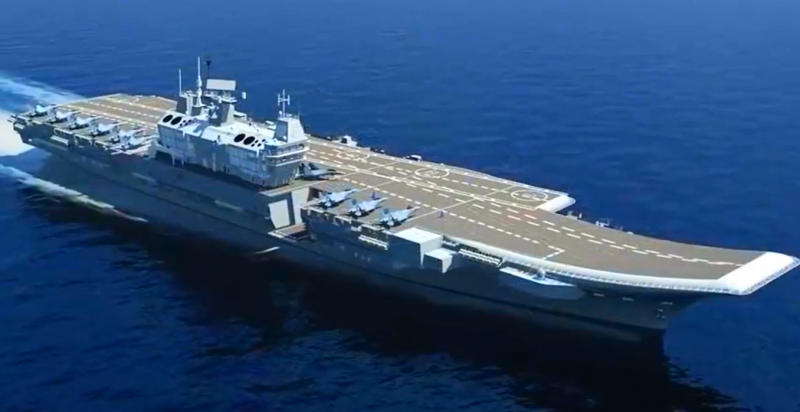
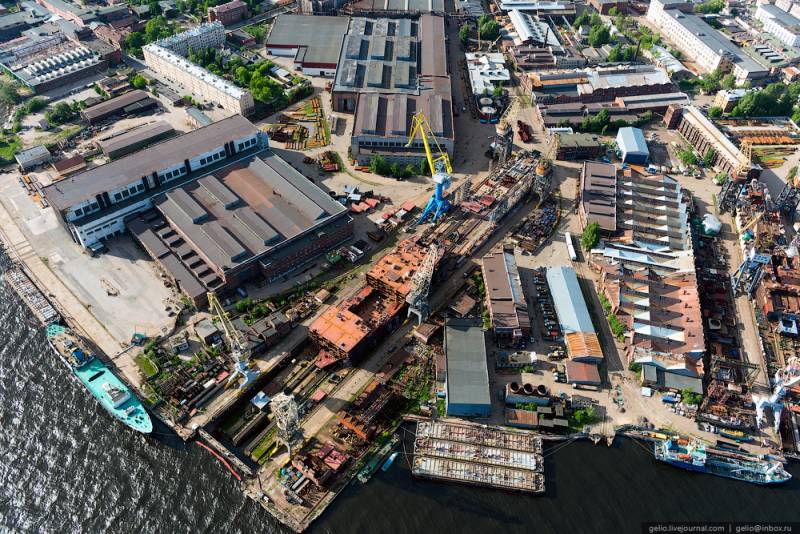
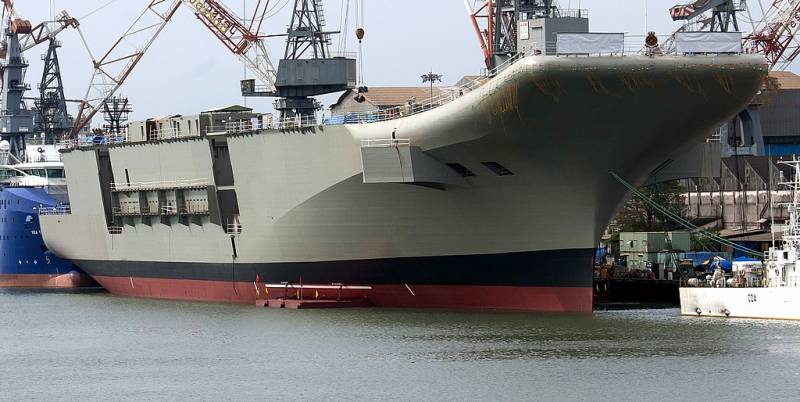
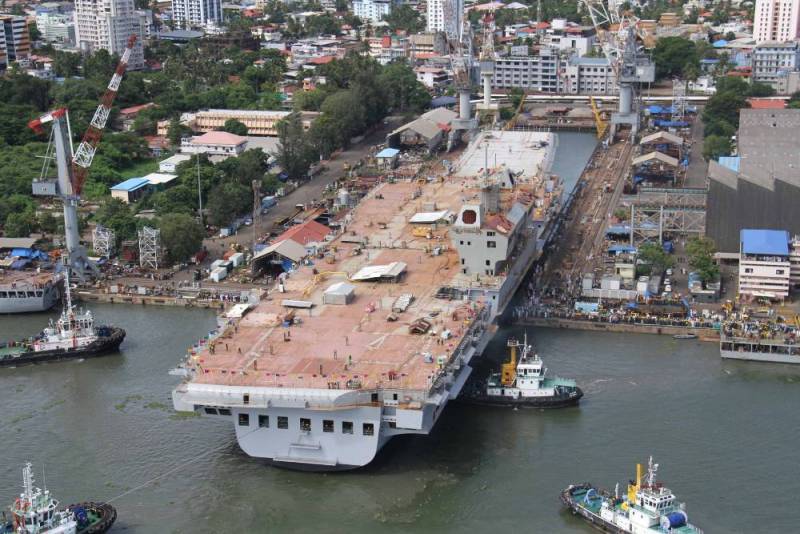
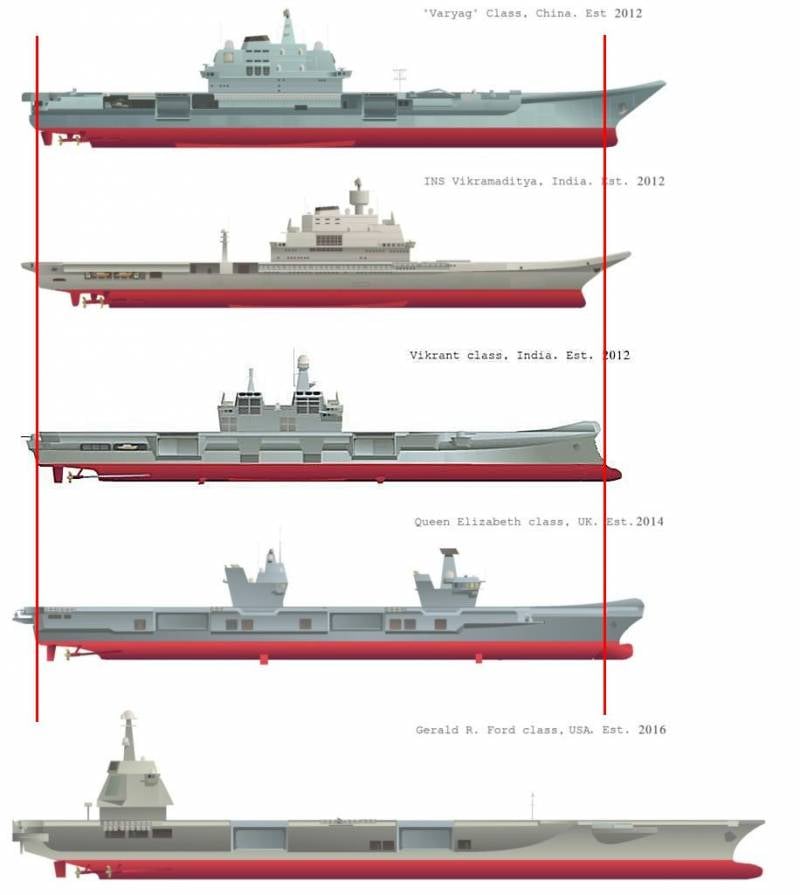
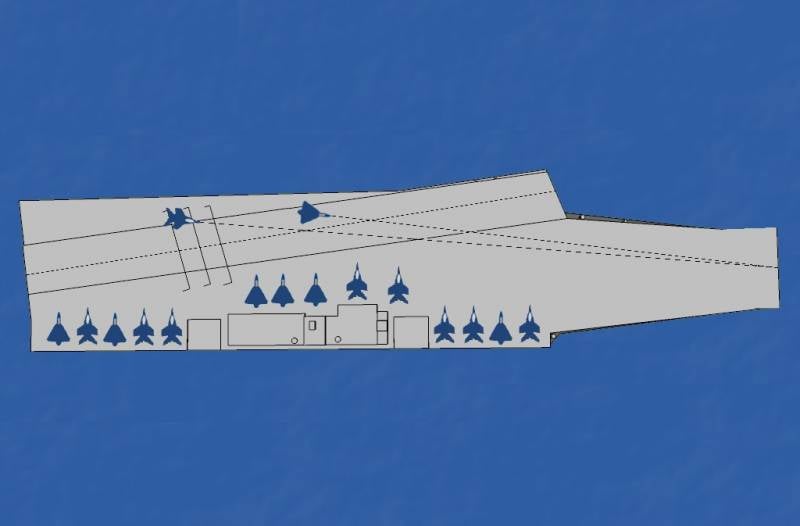
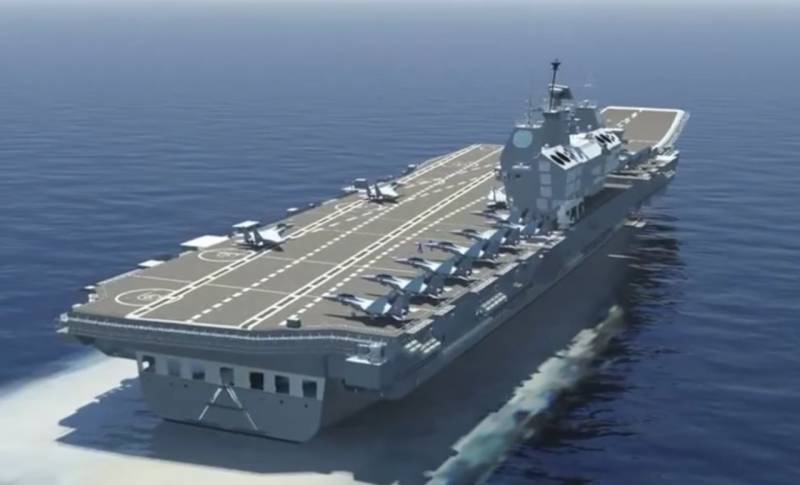
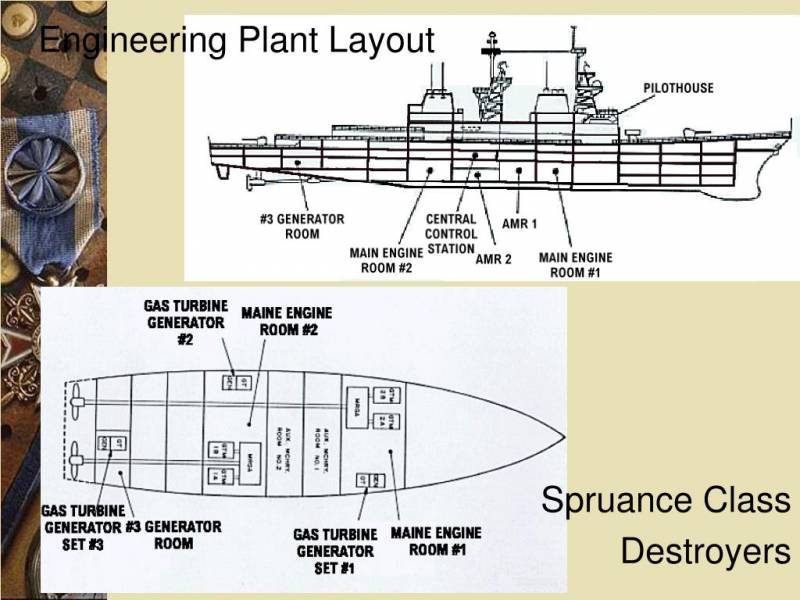
Information